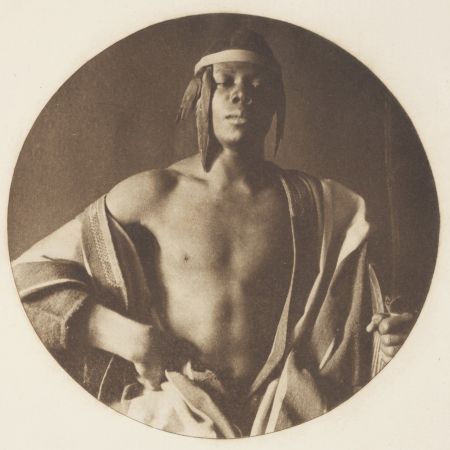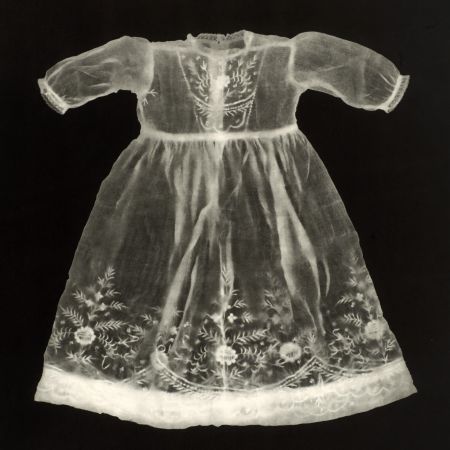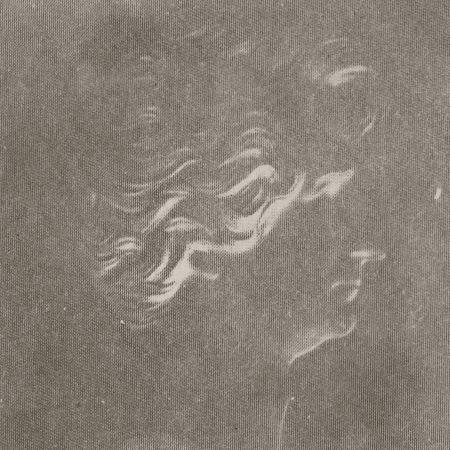The life or death mask can be considered the sculptural analogue of the photographic portrait. — J. Kane
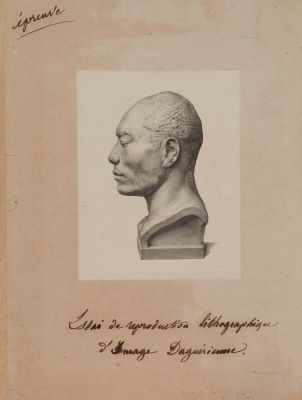
Test lithograph – most likely by Leveillé – made after a daguerreotype by Louis-Auguste Bisson, ca 1843 acquired in 2015 from the collection of André Jammes.
,
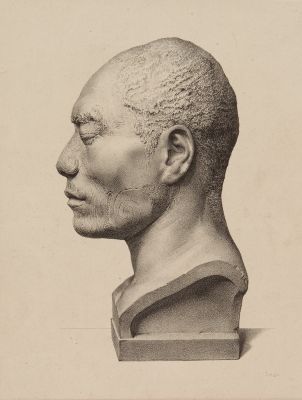
Test lithograph – most likely by Leveillé – made after a daguerreotype by Louis-Auguste Bisson, ca 1843 acquired in 2015 from the collection of André Jammes.
This rare and beautiful test lithograph made after a daguerreotype by Louis-Auguste Bisson represents one of the earliest successful efforts to reproduce photography for use in science.
In 1840 at the dawn of the invention of photography, explorer Jules Dumont d’Urville returned to France from his third ambitious maritime expedition, this time throughout the Pacific and the Antarctic. His bounty, a cachet of biographical and horticultural research included significant ethnographic materials. Pierre-Marie Alexandre Dumoutier, an anatomist and phrenologist, travelled with the expedition to collect plaster life casts and actual skulls of indigenous populations of each site visited over the course of the famous voyage.
The life casts and skulls were used to substantiate Dumont d’Urville’s belief in a phrenological based stratified racial hierarchy among the inhabitants of the South Pacific region. A pseudo-science popular in the 19th Century, phrenology involves the study of the shape and measurements of the skull to predict and determine variations in human temperament. Predicated on the belief that the relative size of different areas in the brain dictated personality and character, phrenological research was often enlisted to support prejudicial racial profiling and endorse colonialist imperatives.
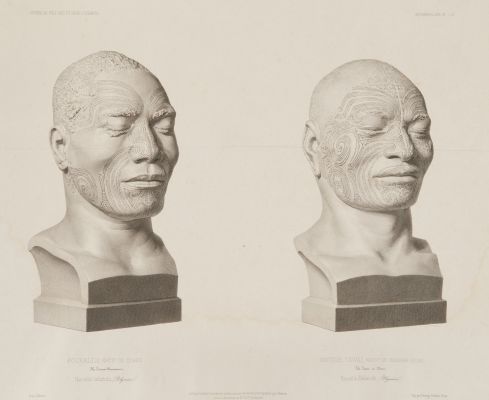
PL 14 Poukalem, Nativ de Otago / Matou Tawi, Natif de Korora-beka. Lith par Leveillé d’aprés lesbustes moules sur nature photographie par Bisson sous la Direction de Mr. le Dr. Dumoutier. Imp par Thierry Freres a Paris. Voyage au Pole Sud et dans L’Océanie; Atlas Anthropologique, 1846

PL. 44 Ile Bali – Ile Timor. Lith par Leveillé d’aprés lesbustes moules sur nature photographie par Bisson sous la Direction de Mr. le Dr. Dumoutier. Imp par Thierry Freres a Paris. Voyage au Pole Sud et dans L’Océanie; Atlas Anthropologique, 1846
Ultimately, the body of research culminated in the important anthropological and geological publication ‘Voyage au Pôle Sud et dans L’Océanie’ (1846). An atlas volume to the multi-volume publication reproduced by lithography the daguerreotypes of the skulls and life casts taken by Bisson in 1841. They show in nuanced detail the physical characteristics of the facial features of the pacific natives and fulfilled the desire for objective accuracy and scientific exactitude. According to Joanna Kane, an artist whose work references early nineteenth century phrenological casts, ‘the life or death mask can be considered the sculptural analogue of the photographic portrait. Both suggest direct traces from life, involve positive and negative, and evoke a mysterious connection between living, breathing subject and captured image.’ (Kane p.5)
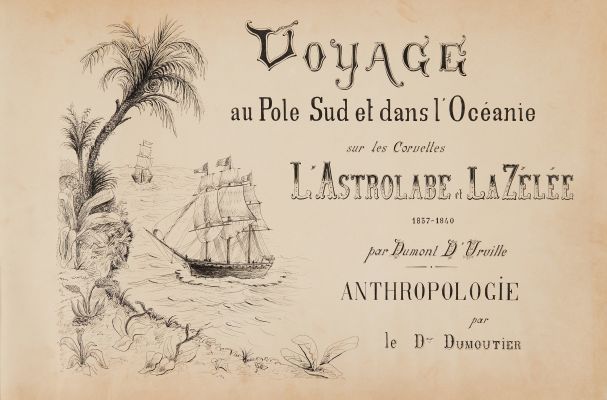
Title page for the unique set of prints in the collection. Possibly a press proof. The prints in this volume, while complete, had titles corrected by hand. It is unknown if the title page to the final work is different. Please forward any information that is available.

Detail of hand-corrected plate title. In the final publication, the text was corrected.
From the altas introduction... This atlas is made up of 50 lithographic plates representing: 48 busts molded in nature; 63 skulls from burials and ossuaries; 16 figures of brains covered with their membranes, chosen from the collection as types of the main varieties of the human races observed during the trip... All the figures were drawn from nature, or from molded reliefs on nature, and at the same time according to Daguerre images rigorously made at half natural size. The busts are seen in three-quarter perspective. The skulls and brains are seen from the front and in profile. Finally all the objects were photographed in a vertical direction, at the same height and at the same distance and lighted on the same angle; their size was determined by the processes of spherical trigonometry, so that their images were as exact as possible and could be used for studies of ethnology, aesthetics, physiology, physiognomy and phrenology, according to the various theories of Blumenhach, Camper, Daubenton, Gall, Spurzheim, Georges Combes, Cuvier , Spyx, Retzius, Morton, etc.

Detail of skull. Notice extremely fine and realistic handling of light in the teeth and gums. An outstanding achievement considering the year published.

Louis Auguste Bisson, detail from PL 28, Téa-Kaou (Panga´-Motou), Voyage au Pole Sud et dans L’Océanie; Atlas Anthropologique, 1846

Louis Auguste Bisson, Ancient Burial Place of Téa-Kaou (Panga´-Motou), Mangareva, Gambier Islands, Polynesia
1841-1842 Daguerreotype, Collection of Musée de l’Homme. This Daguerreotype was included in “The Dawn of Photography: French Daguerreotypes, 1839-1855” exhibition at the Metropolitan Museum

Detail of lithographic ink matrix.
The lithographs are particularly remarkable in their capturing the three-dimensionality inherent in the daguerreotype images of the casts and skulls where the
‘mysterious connection’ between the image and the subject is mediated by three separate (yet intertwined) processes. Here, the trace of life is filtered through the life cast, the daguerreotype and the lithograph.
We are grateful to have in our collection this
rare early test proof (from the collection of André Jammes) along with a complete set of proof plates from this landmark primitive pre-photomechanical project.
References
Batchen, Geoffrey. Apparitions: The Photograph and Its Image., 2017
Comptes Rendus de l’Académie des Sciences, Vol. XVIII, 1844 S. 1032nd
Hombron, Bernard, Honoré Jacquinot, and D’Urville J. S. C. Dumont. Voyage Au Pole Sud Et Dans L’oceanie. Paris: Gide 1837-1840: Atlas Anthropologique 1846
Kane, J. ‘The Somnambulists: Photographic Portraits from before Photography’. Stockport, England: Dewi Lewis Publishing with National Galleries of Scotland. 2008 p 5
Smith, Bernard. European Vision and the South Pacific 1768-1850: A Study in the History of Art and Ideas. Yale, 1988










